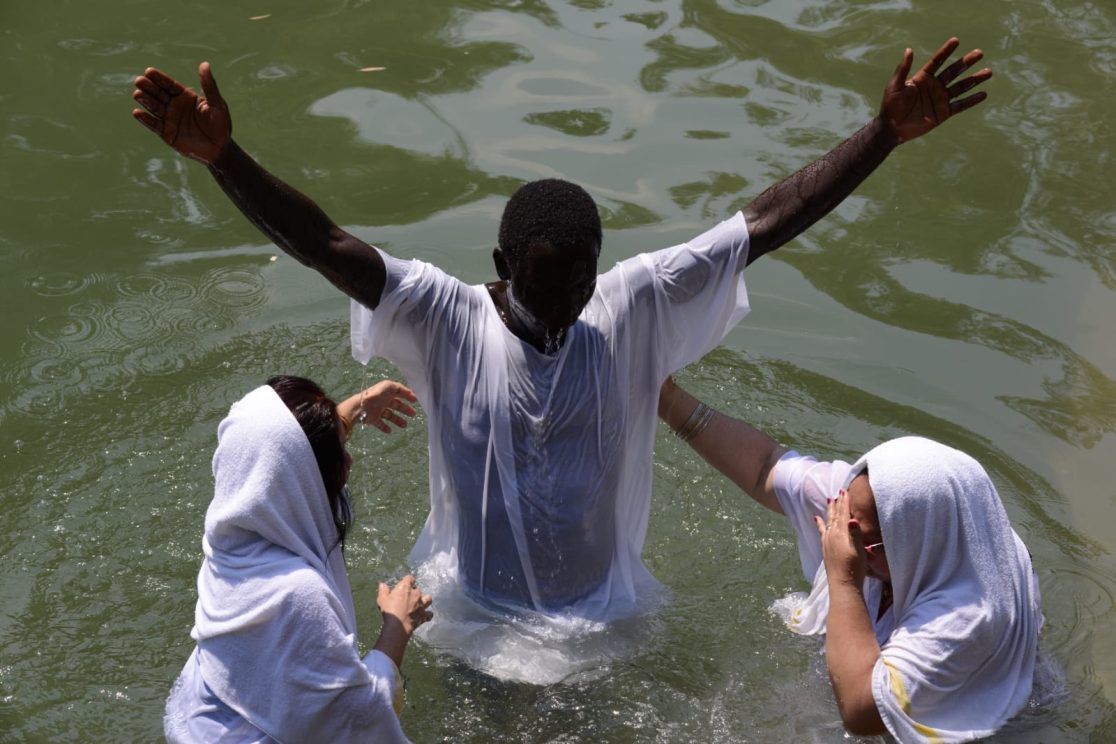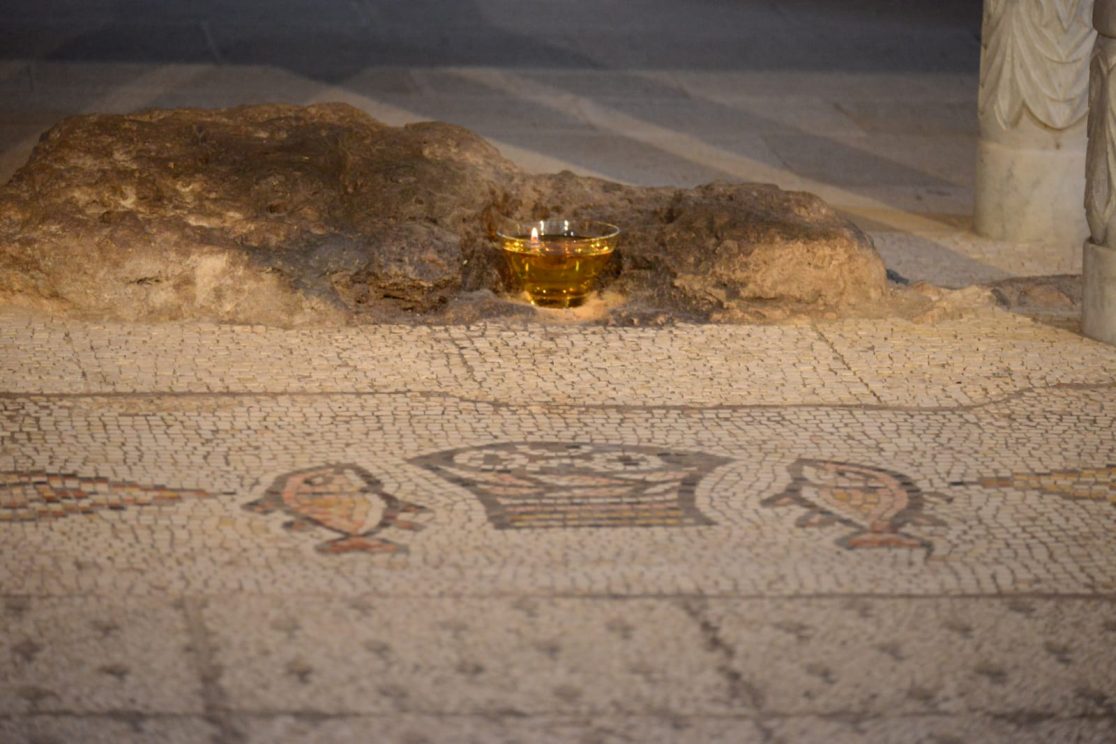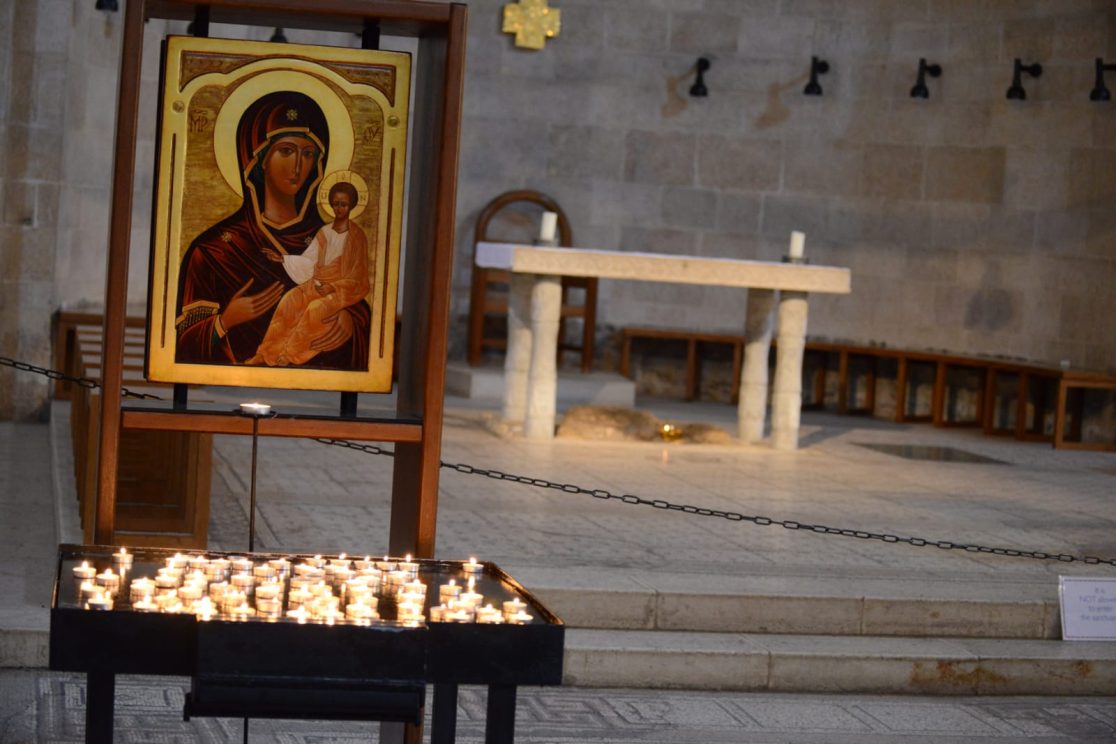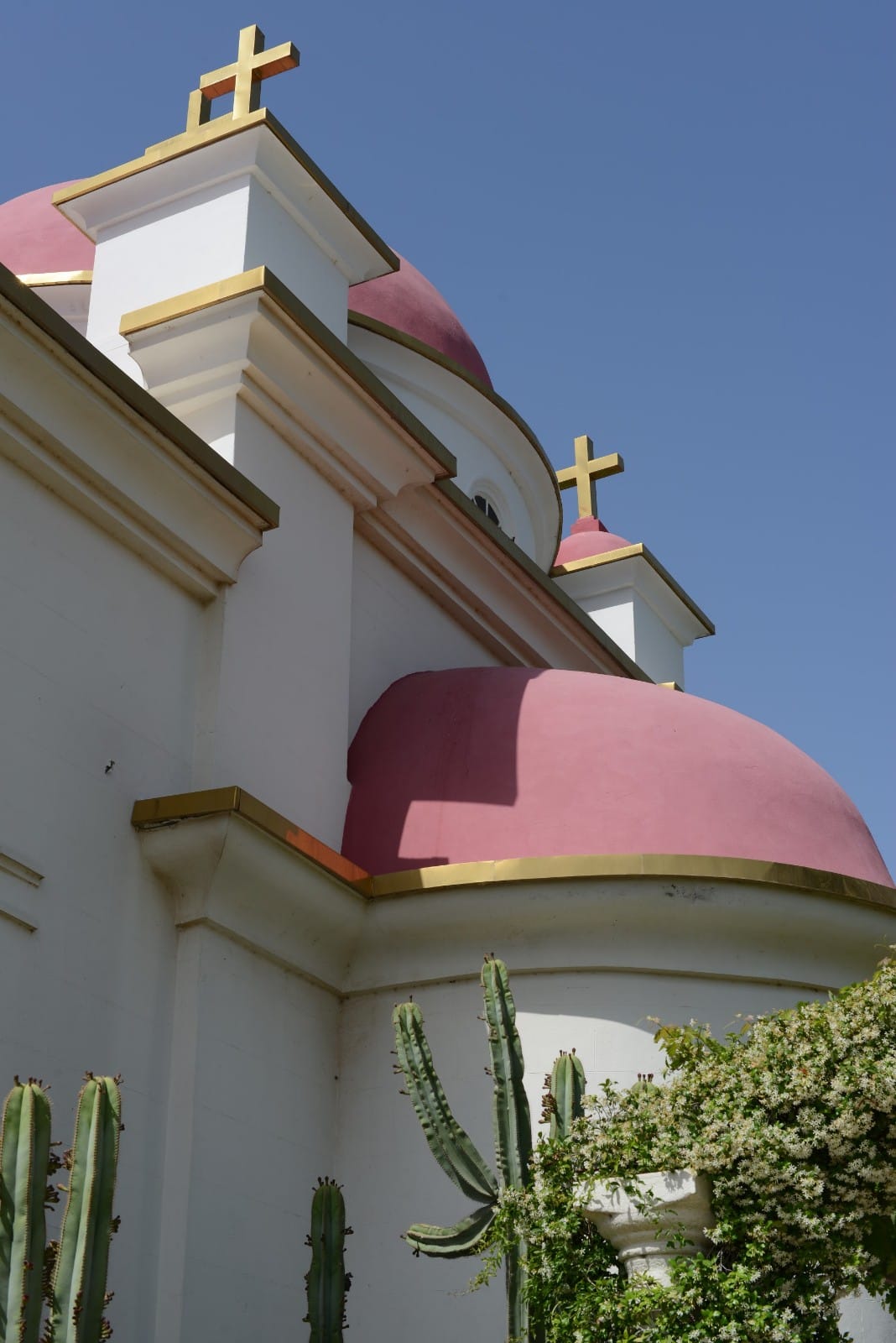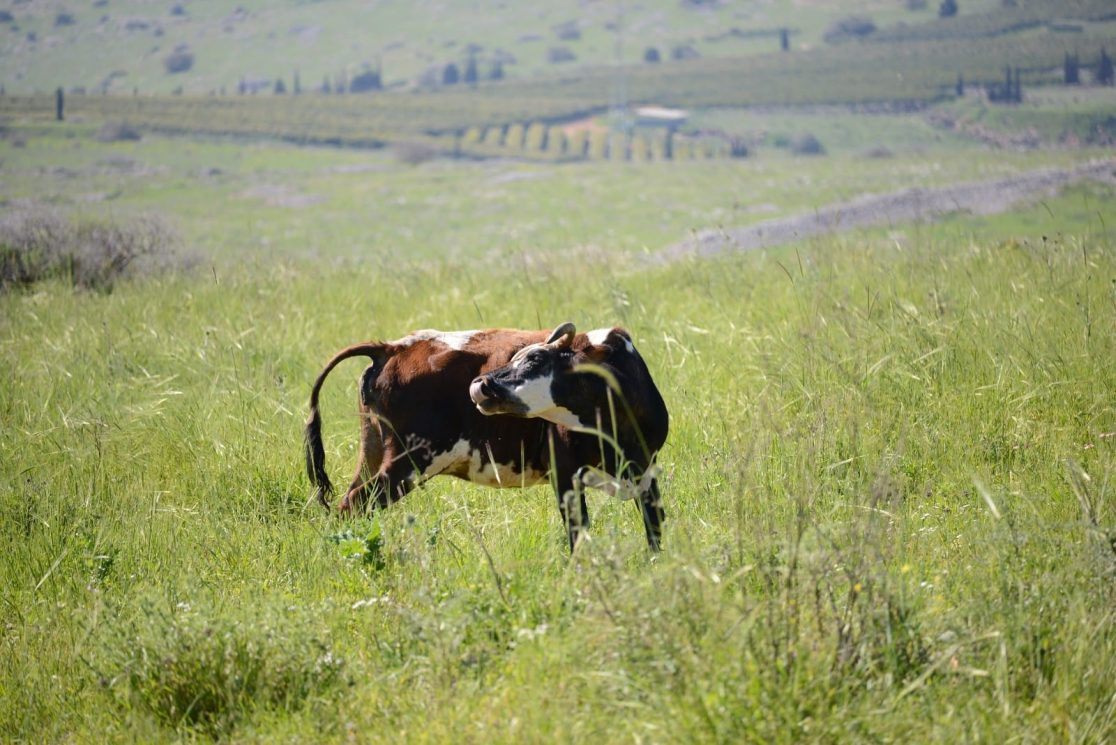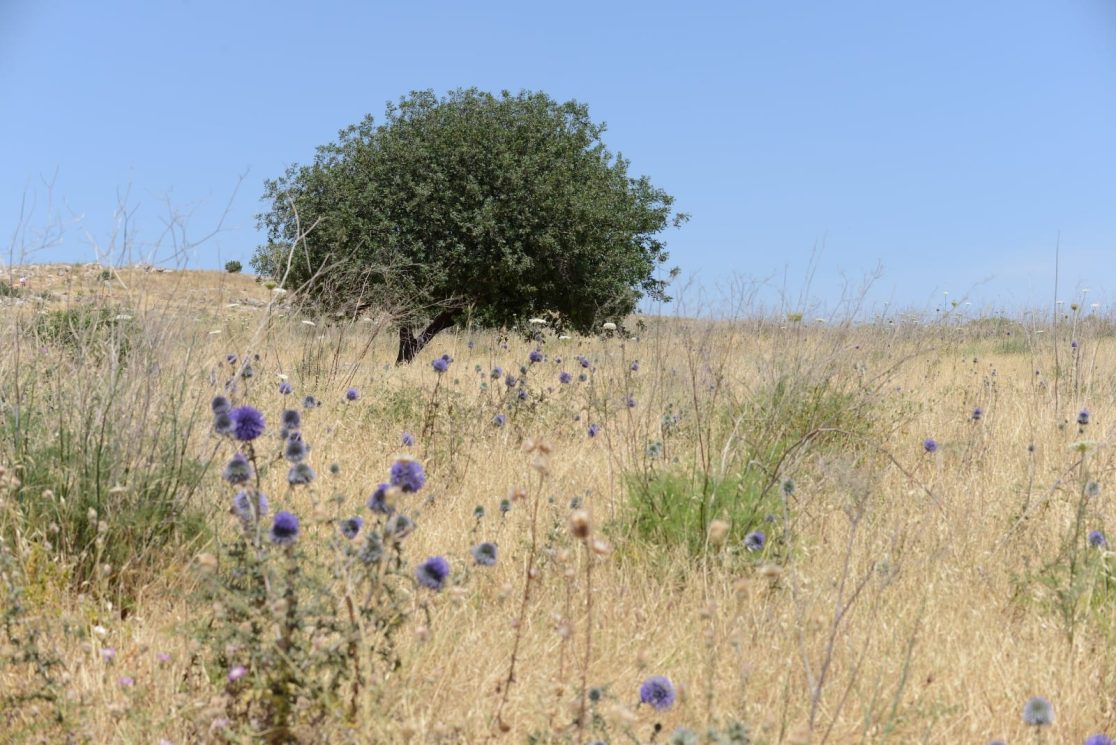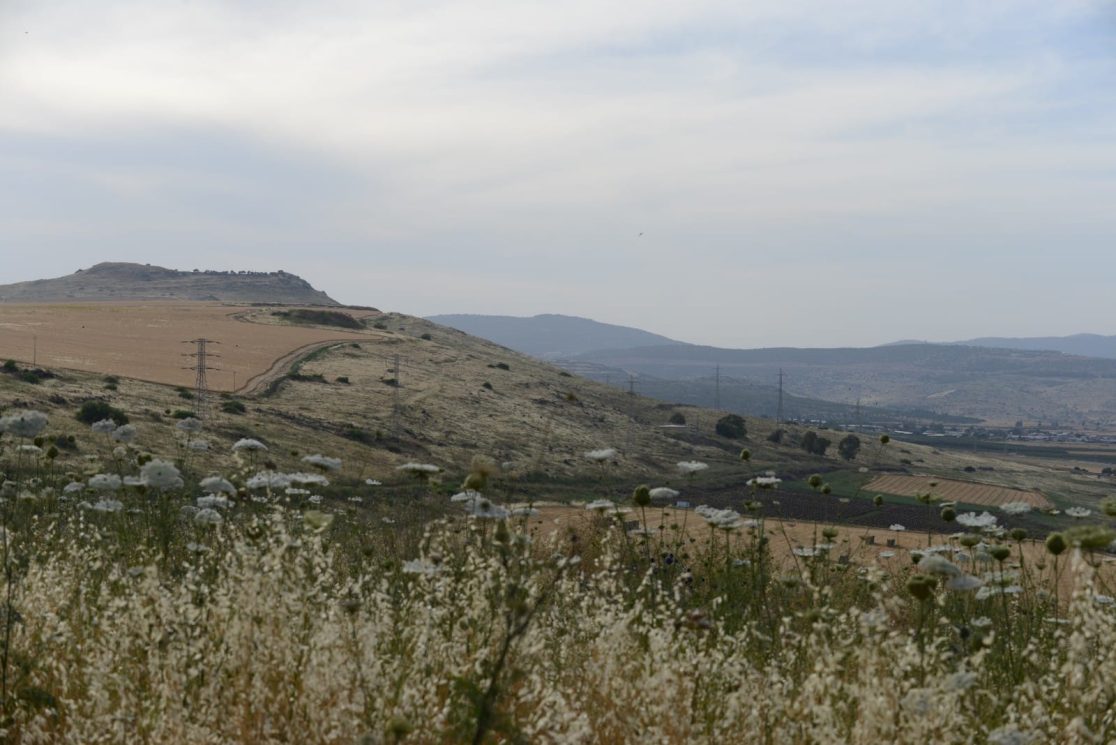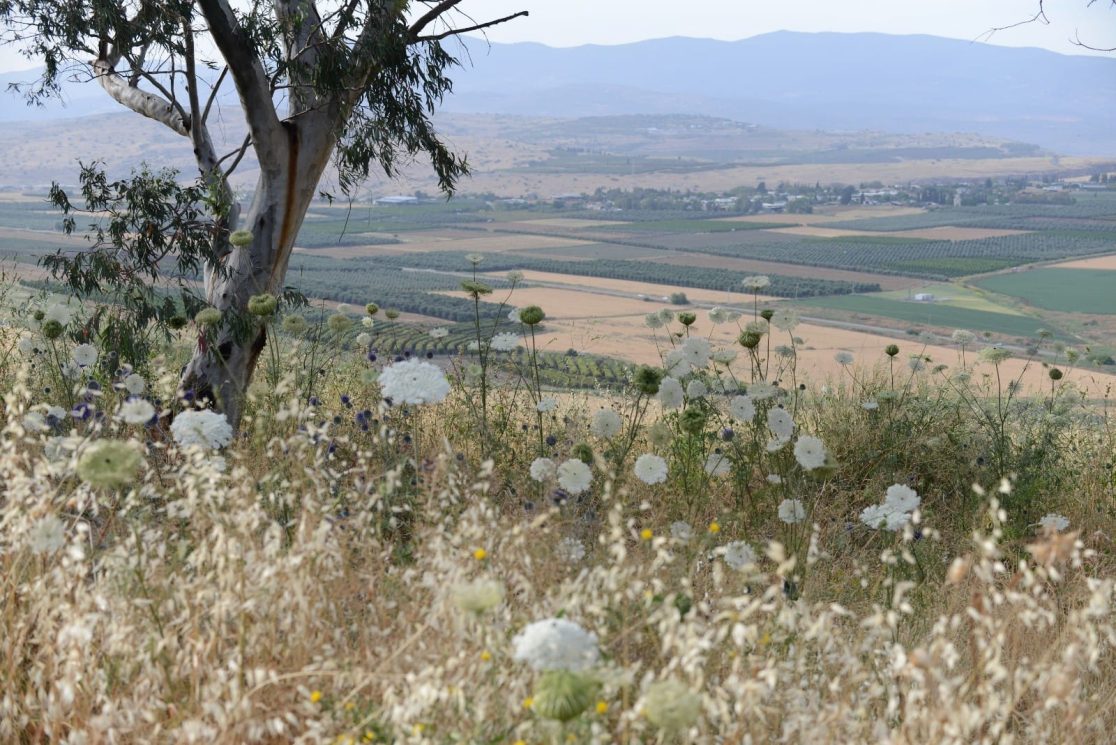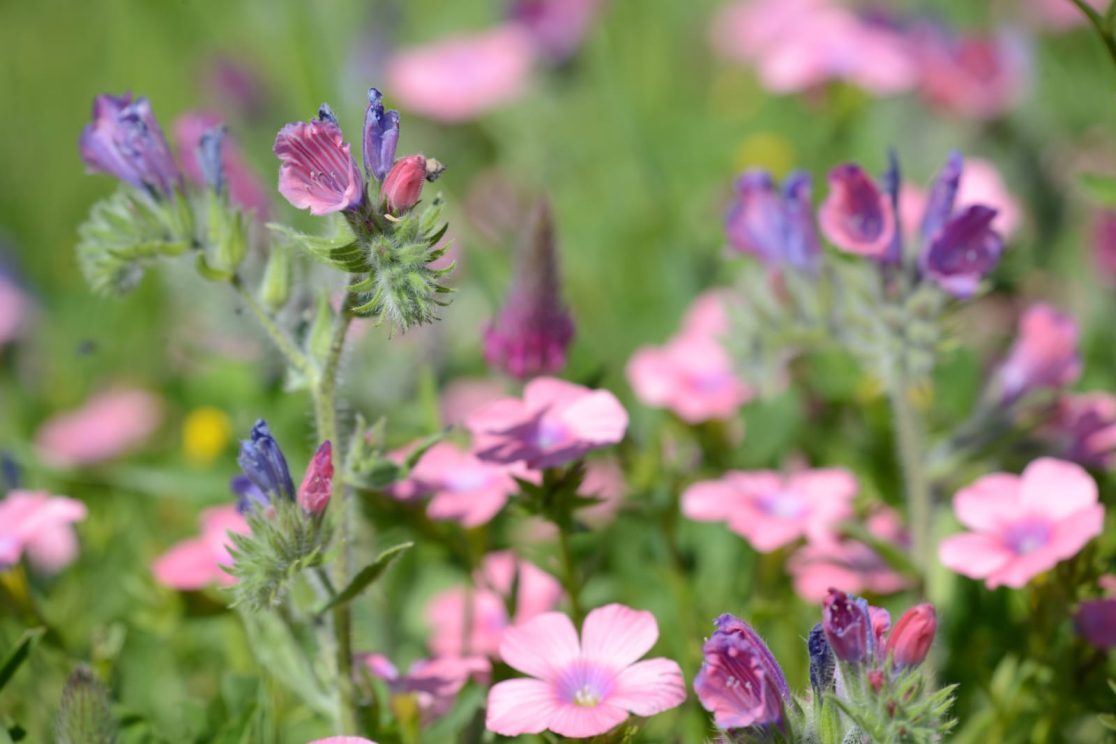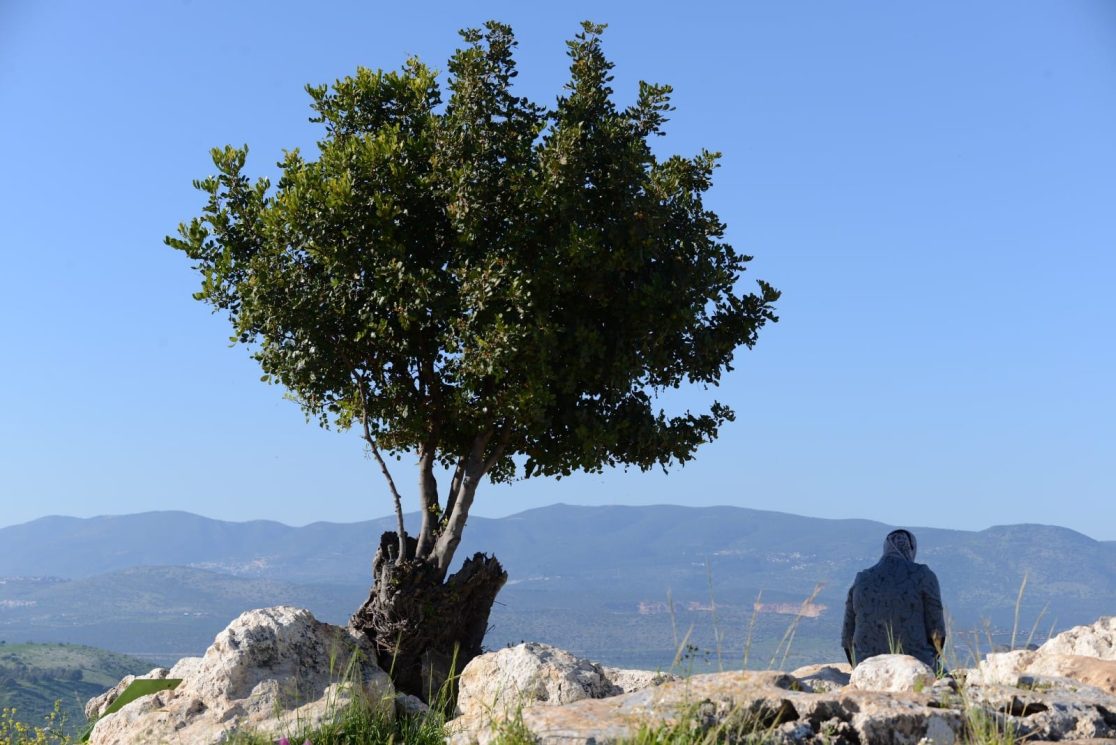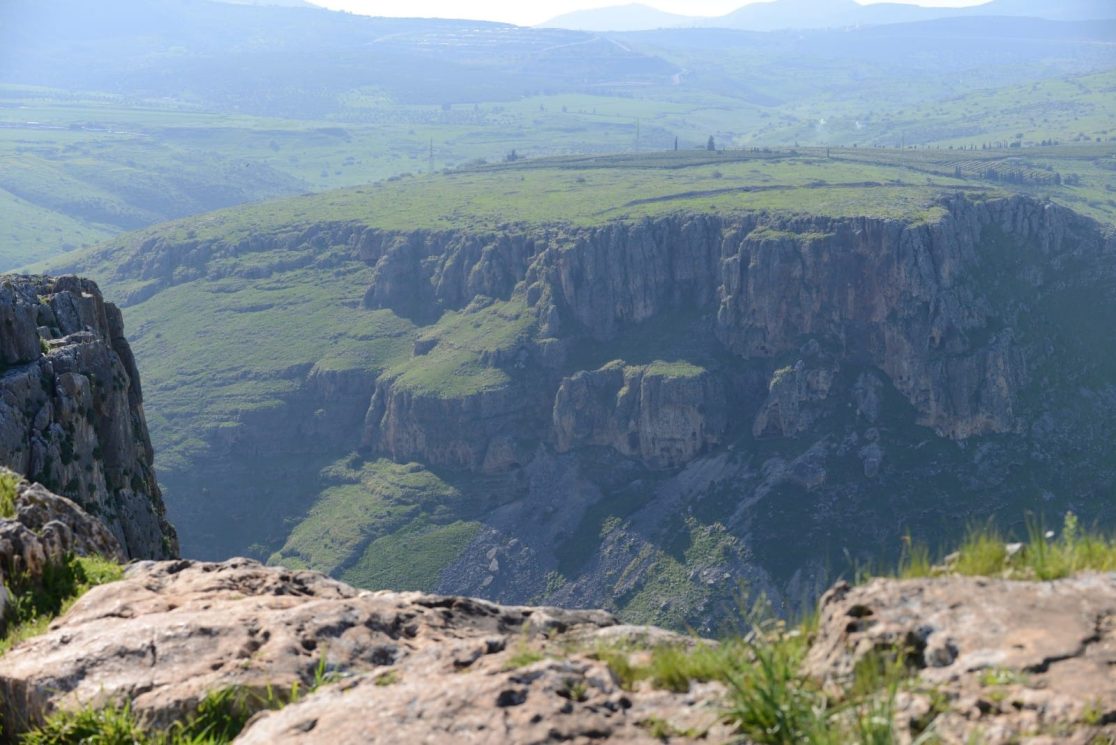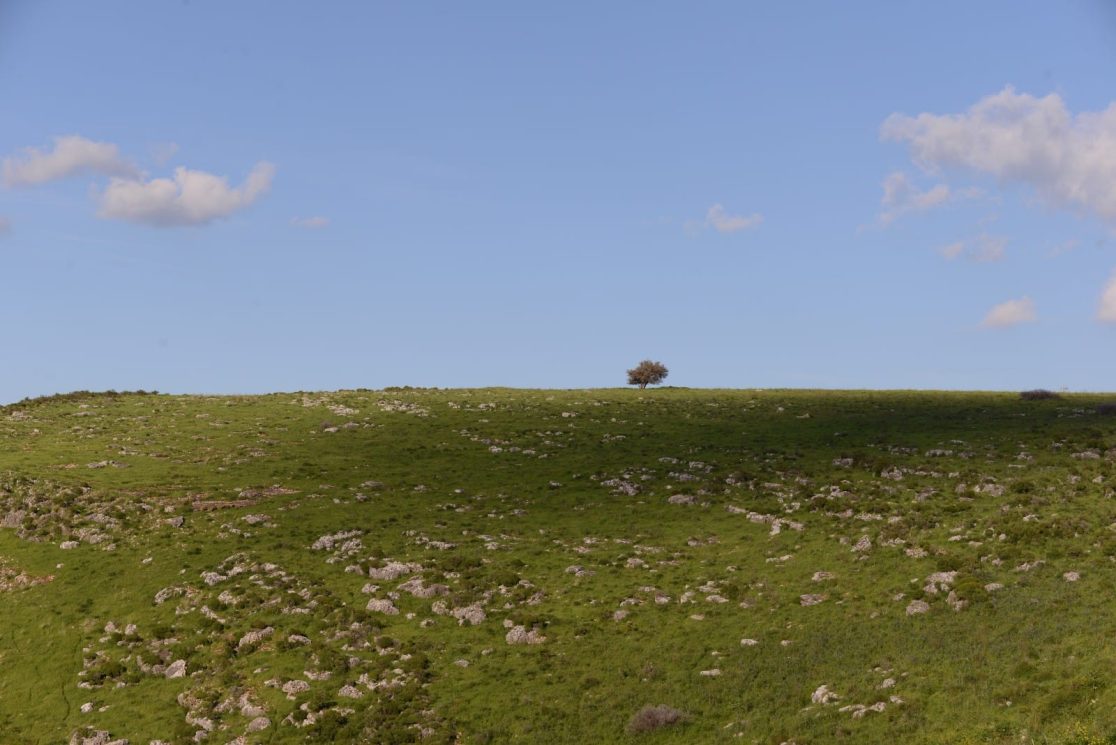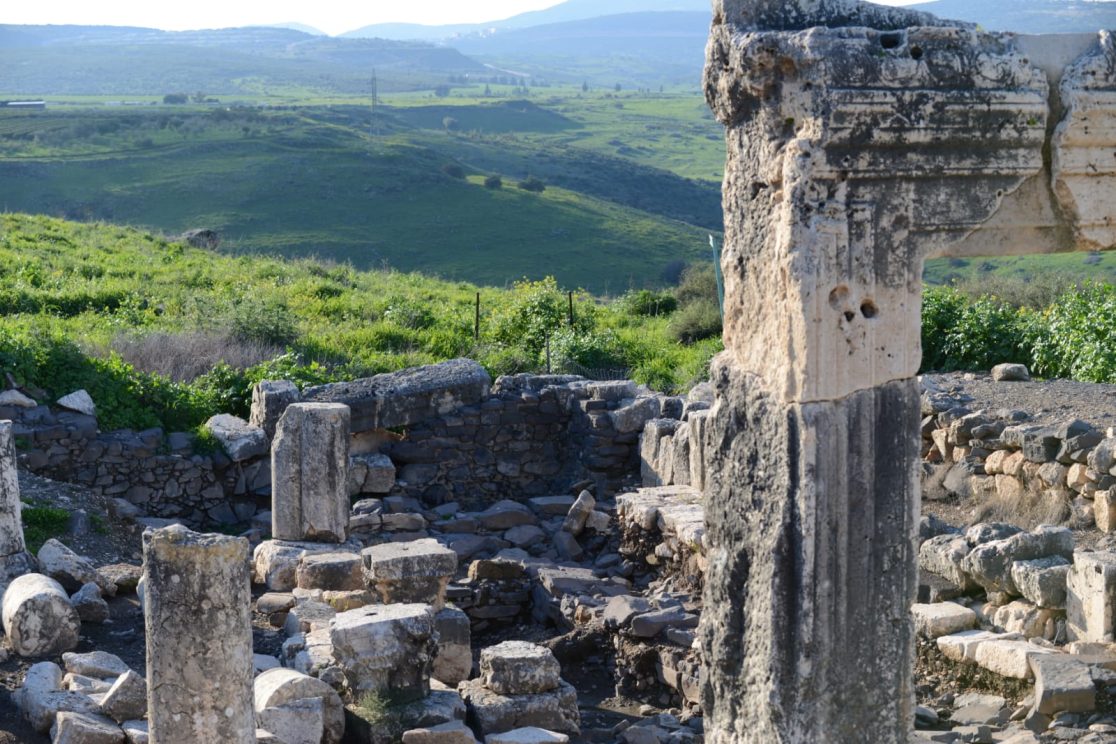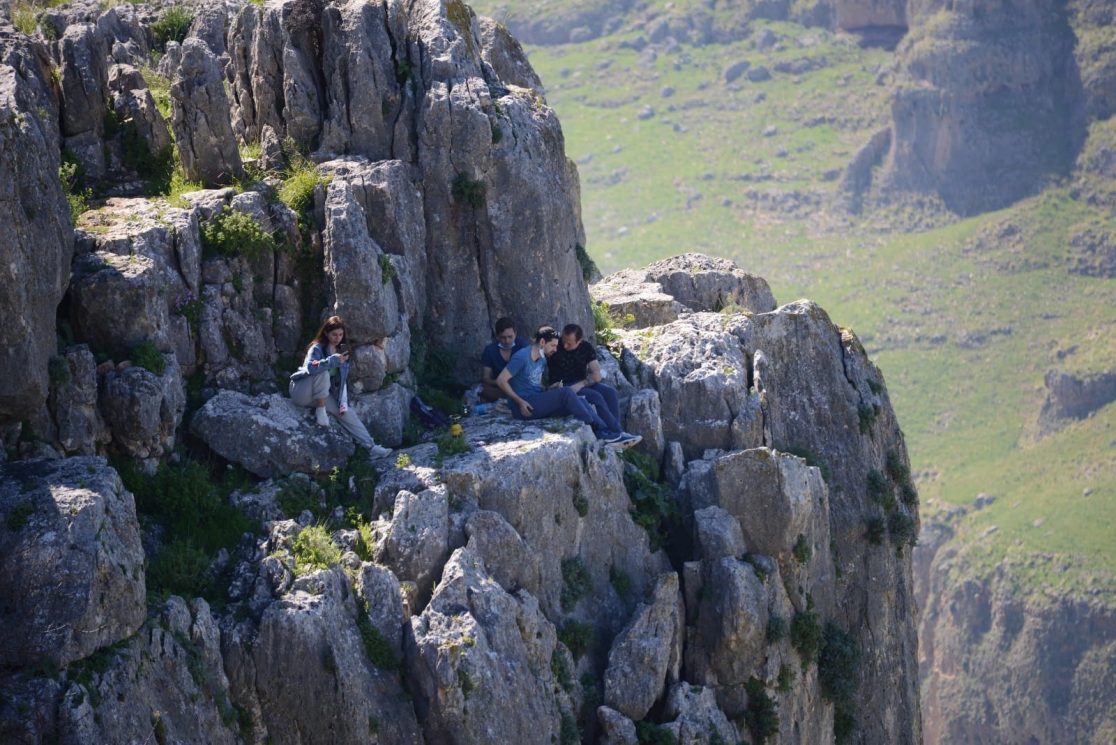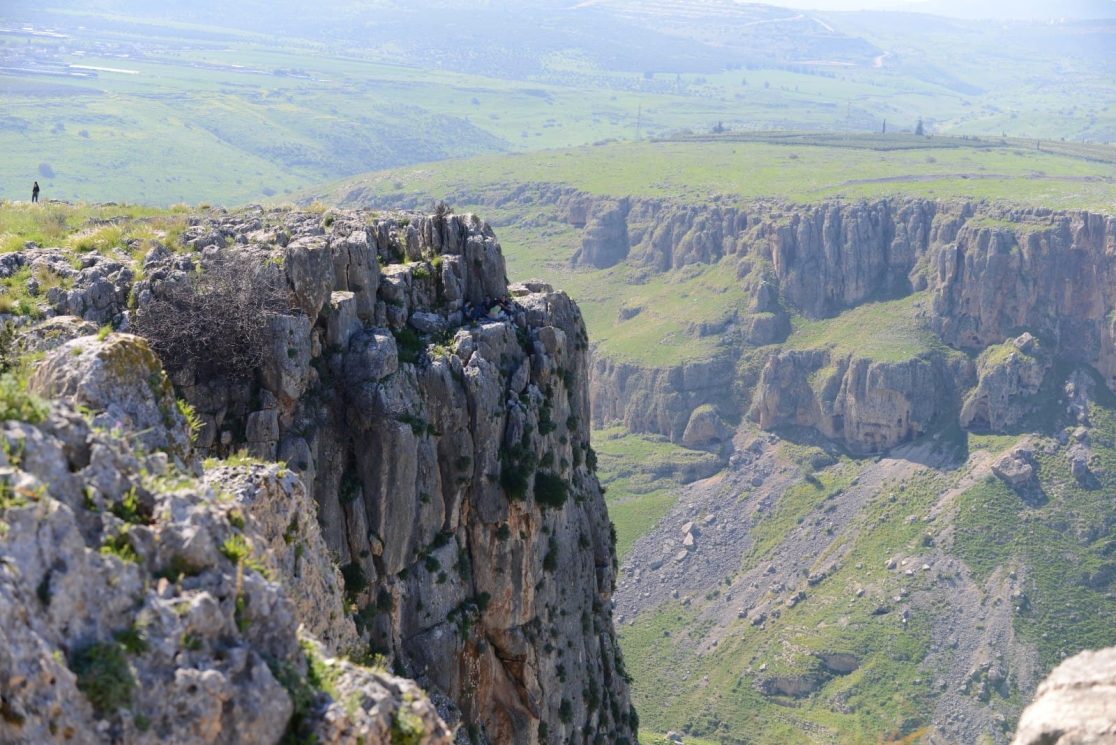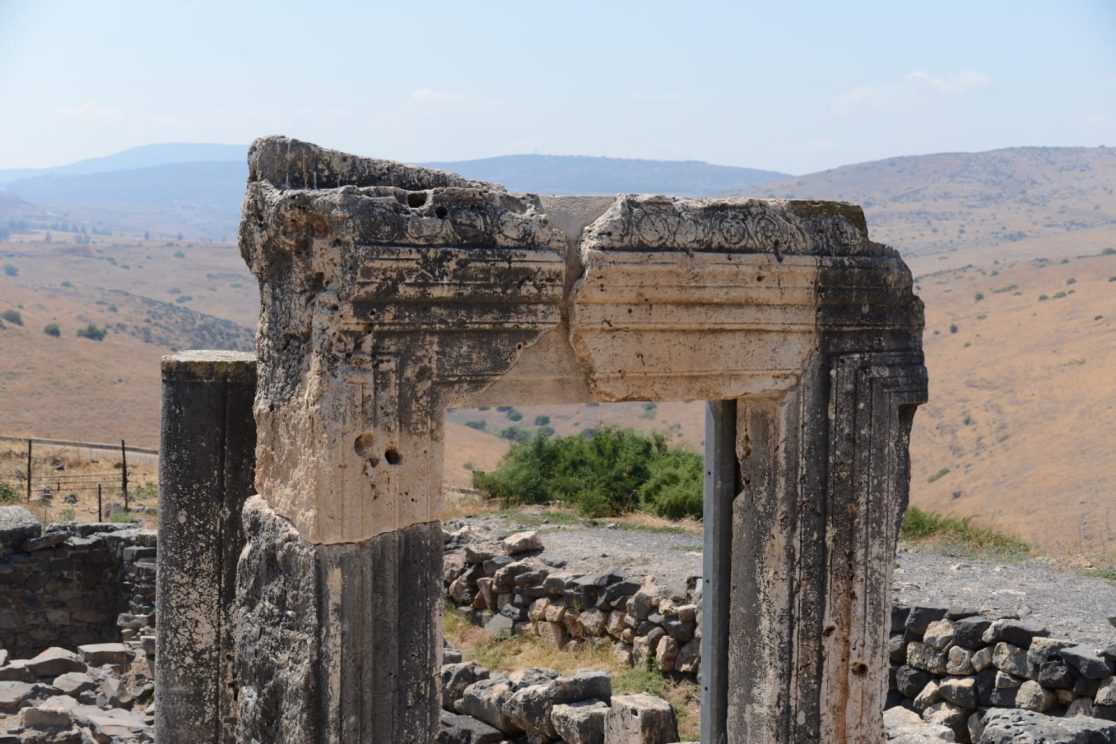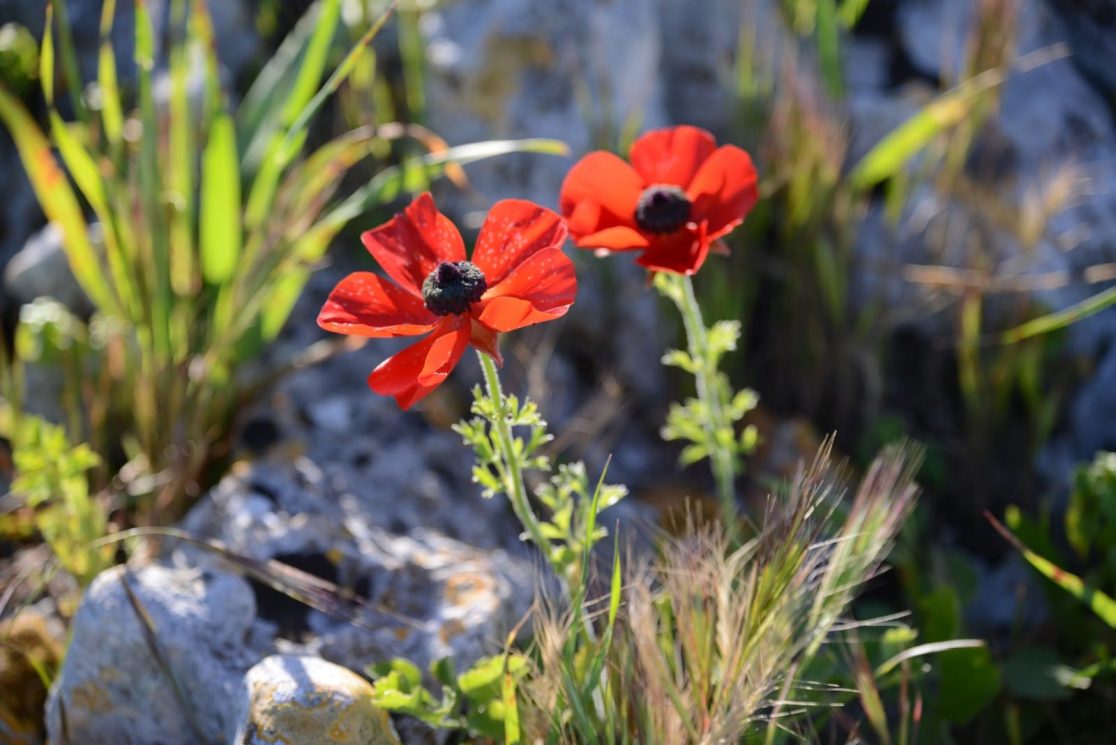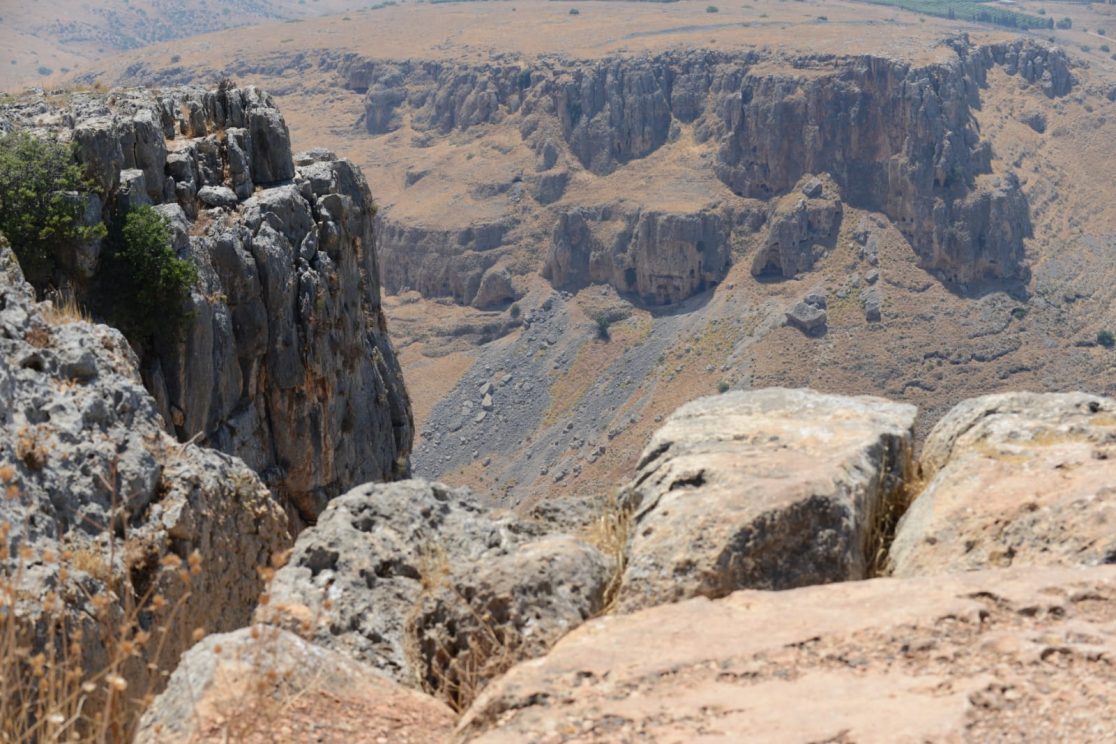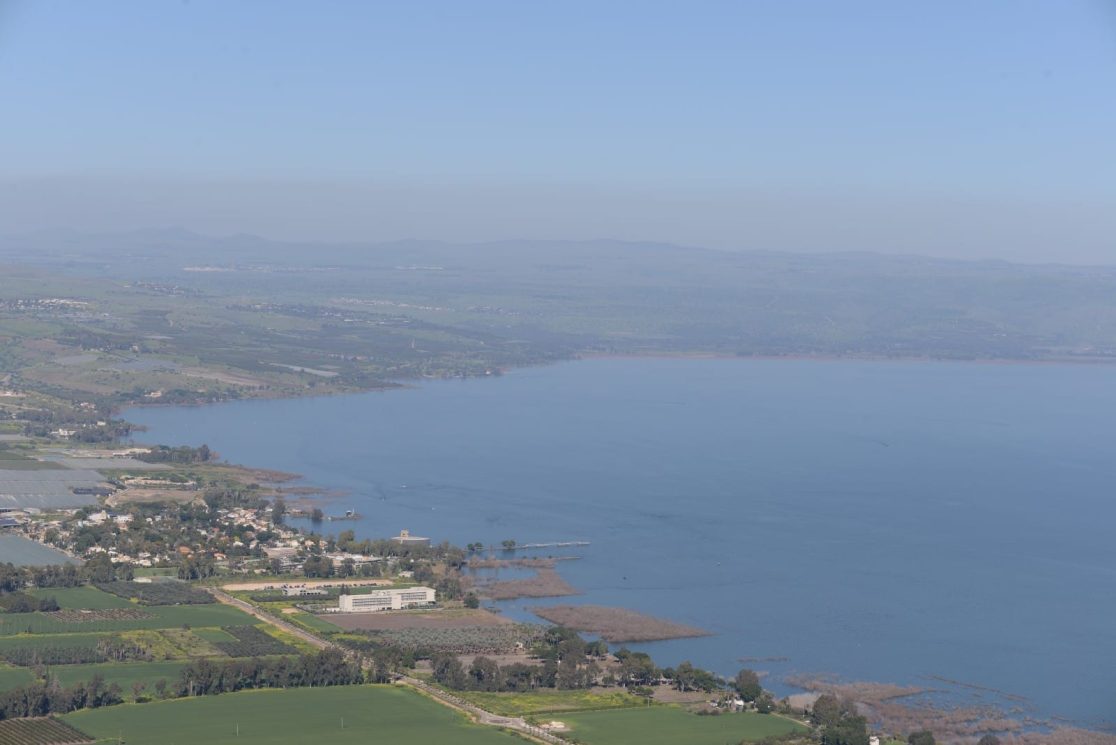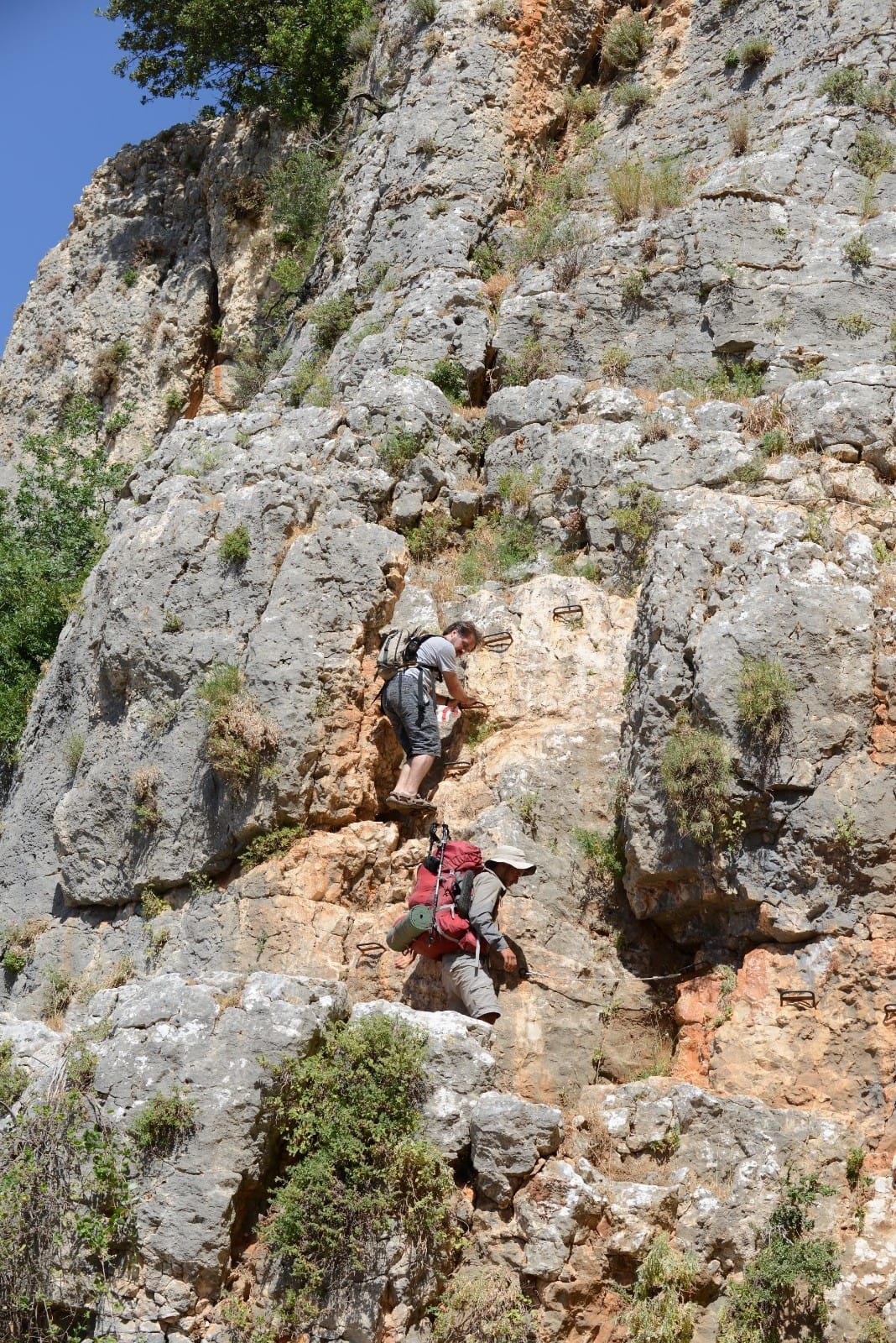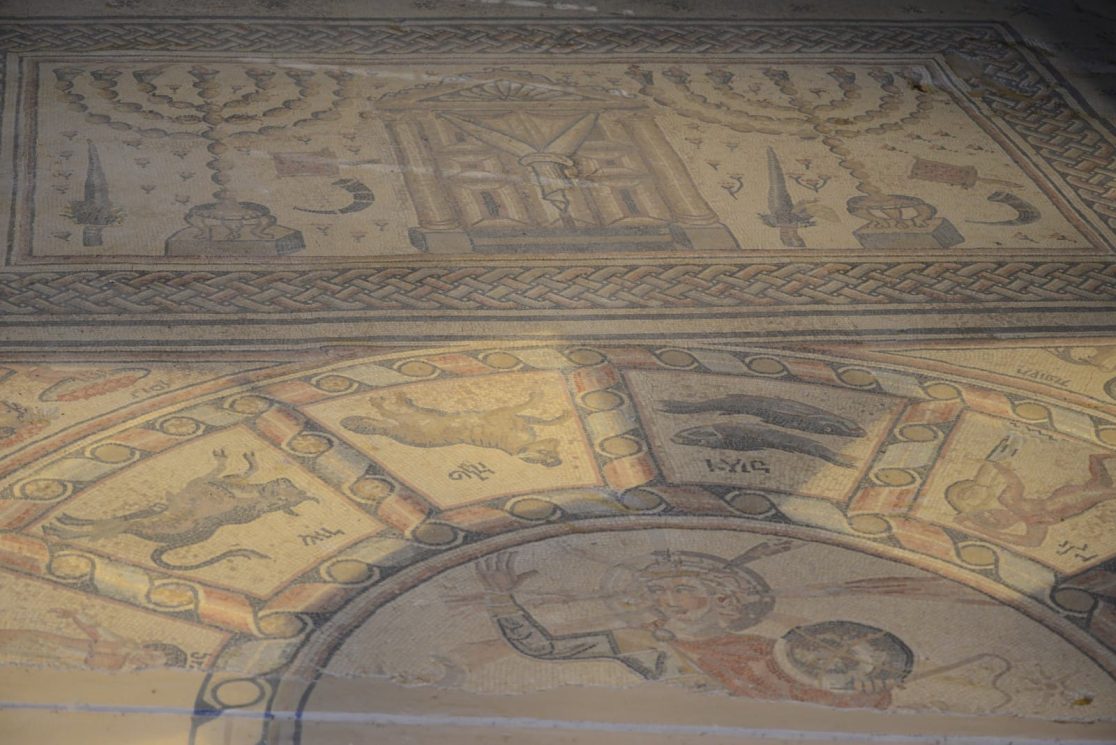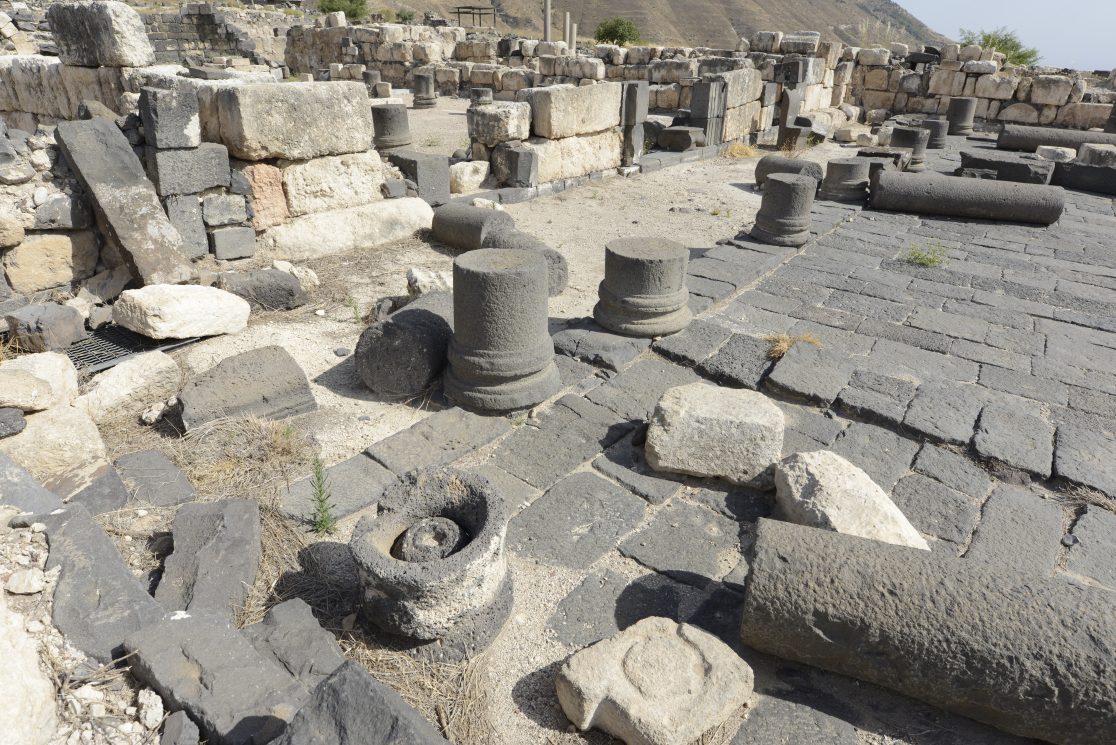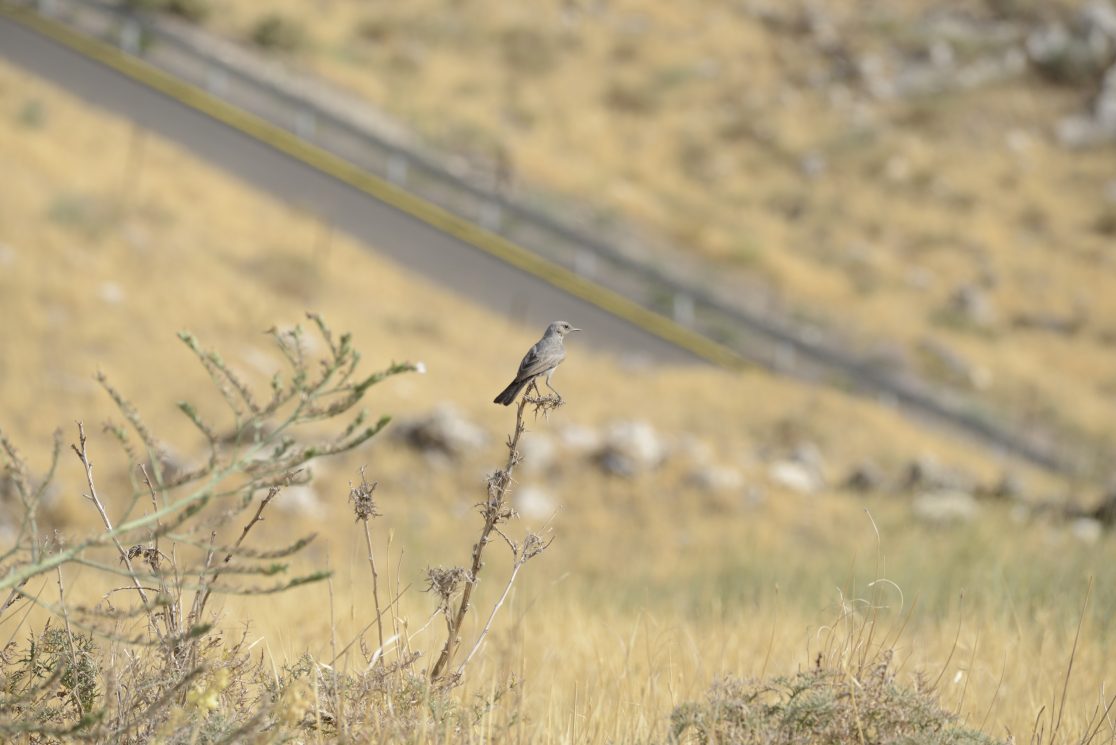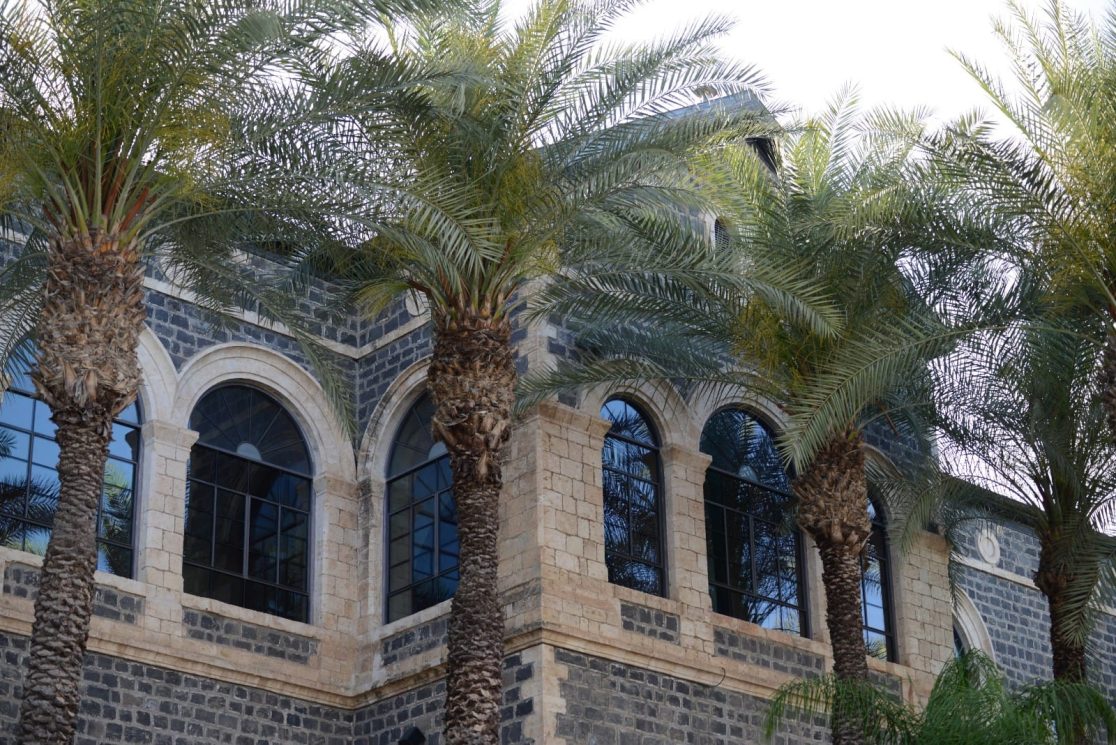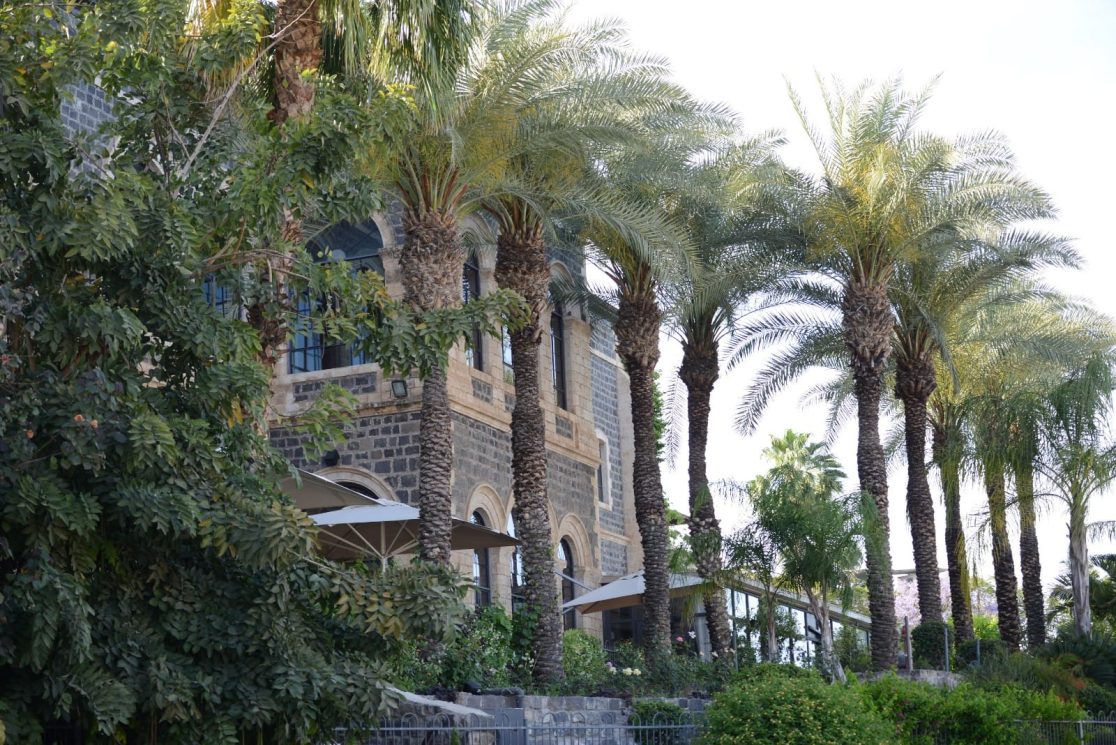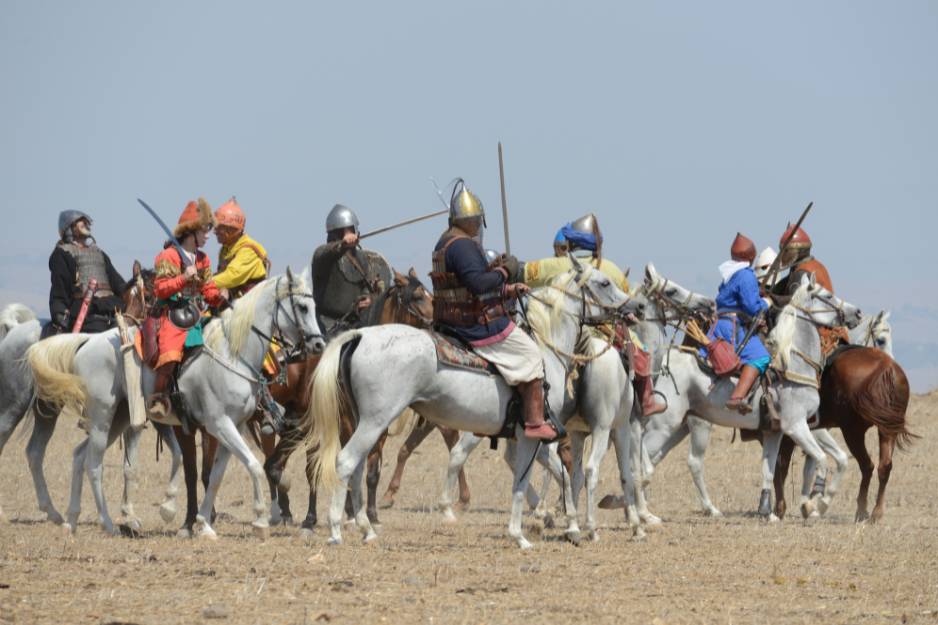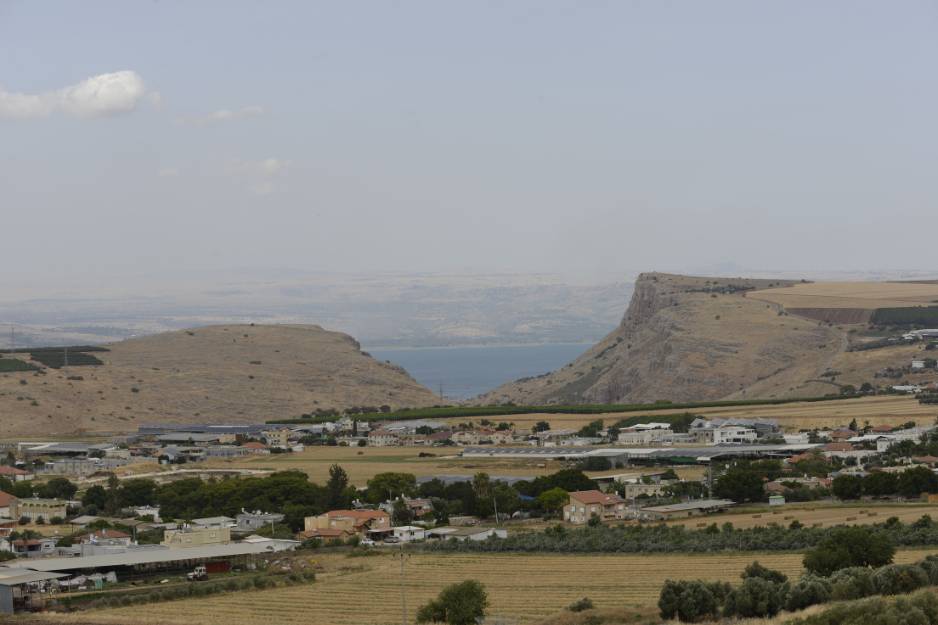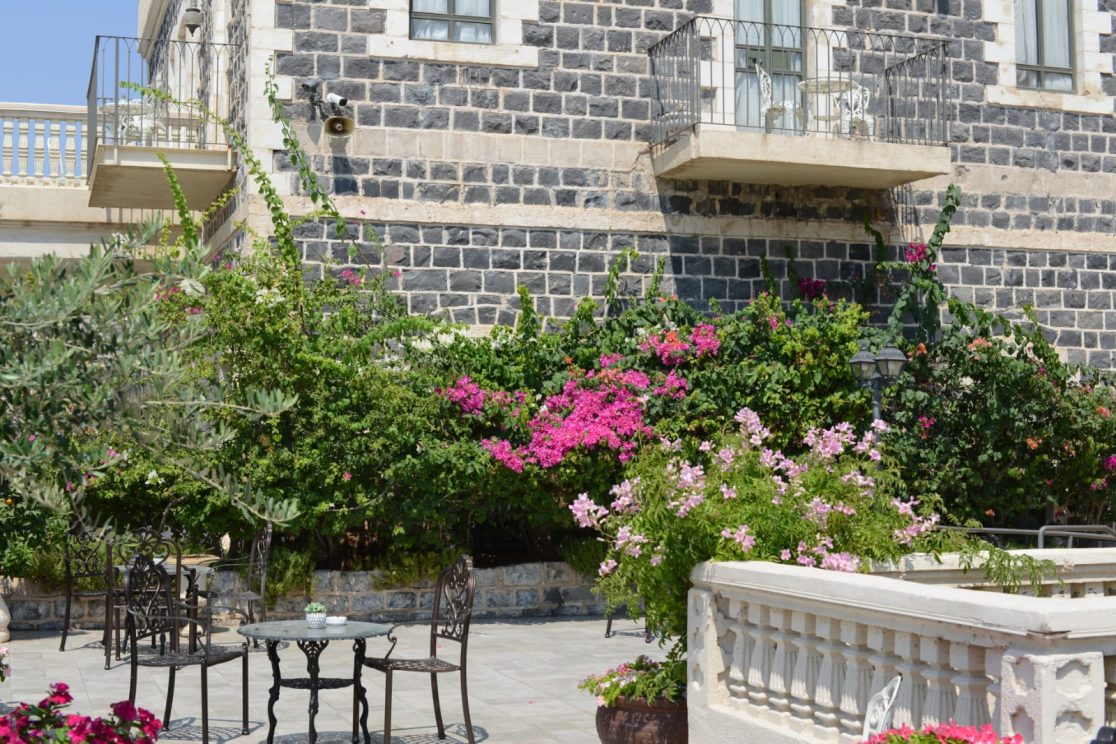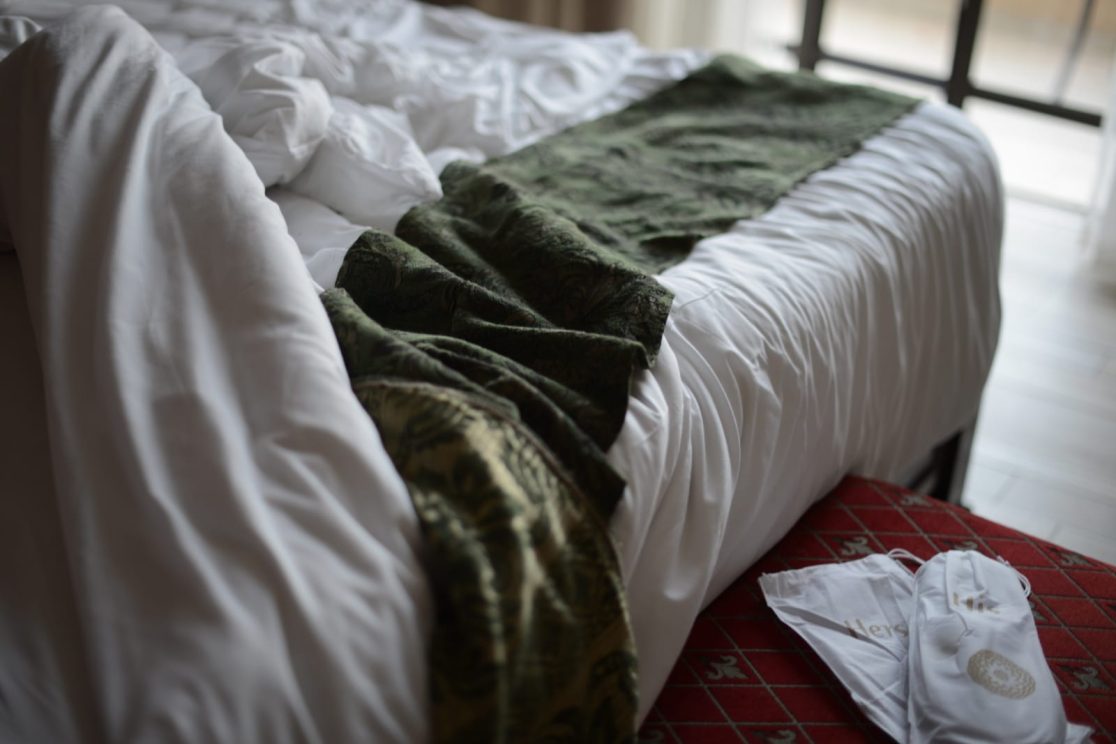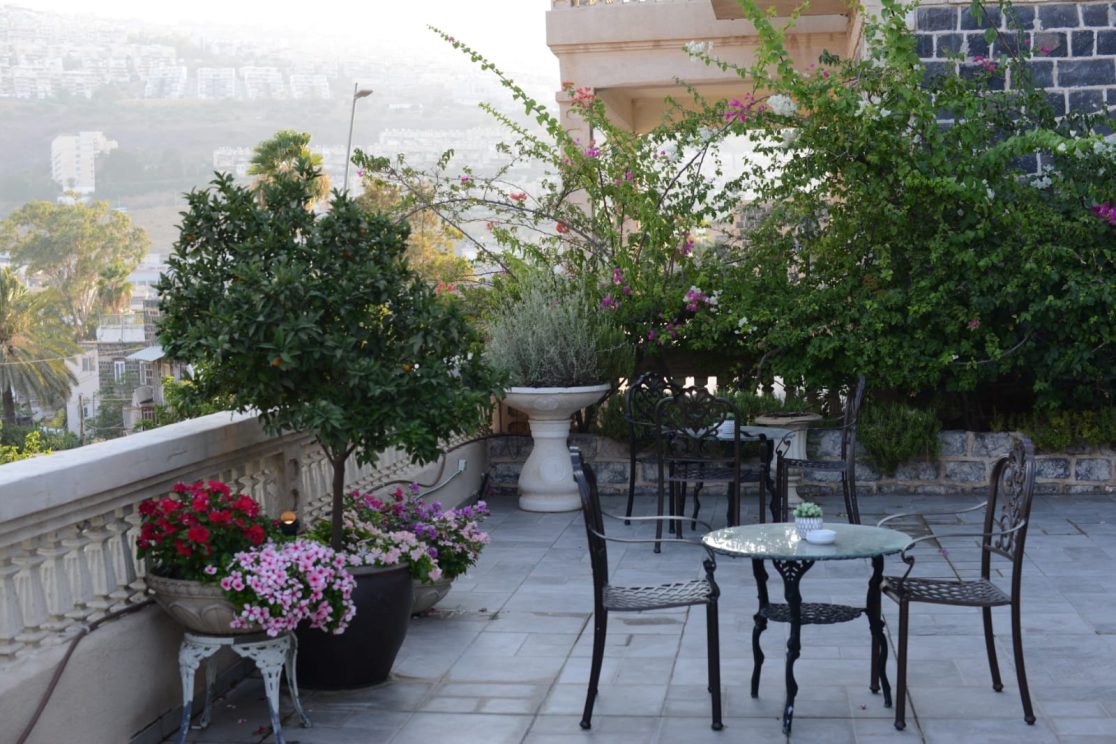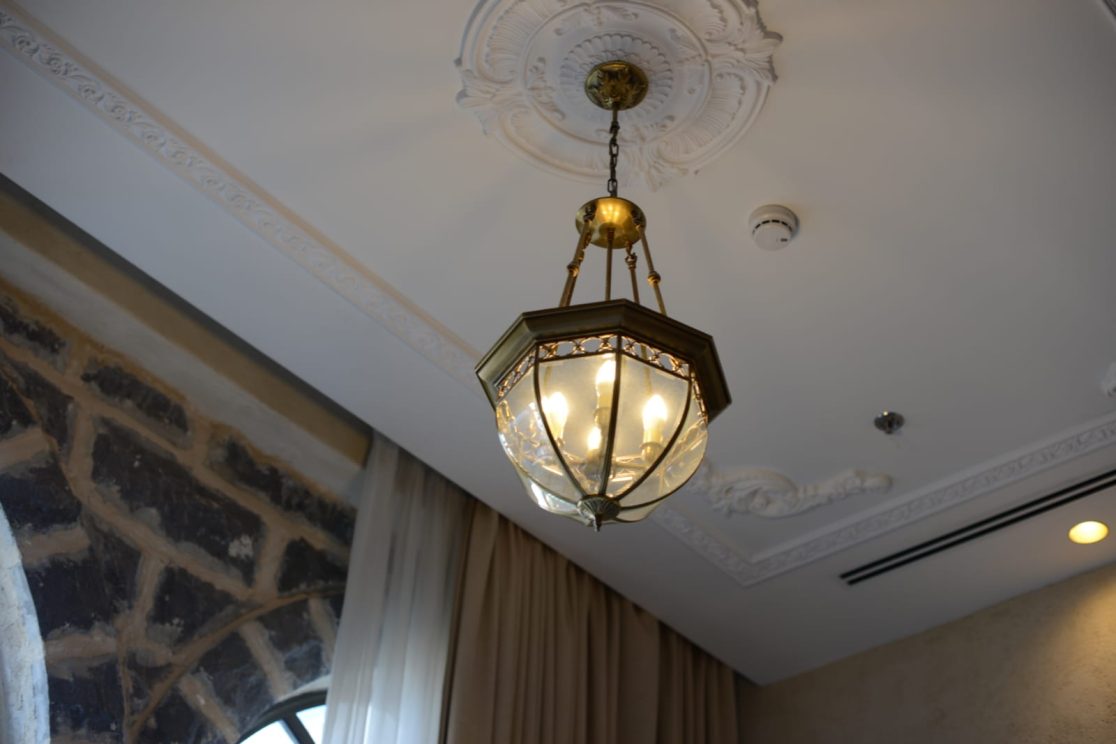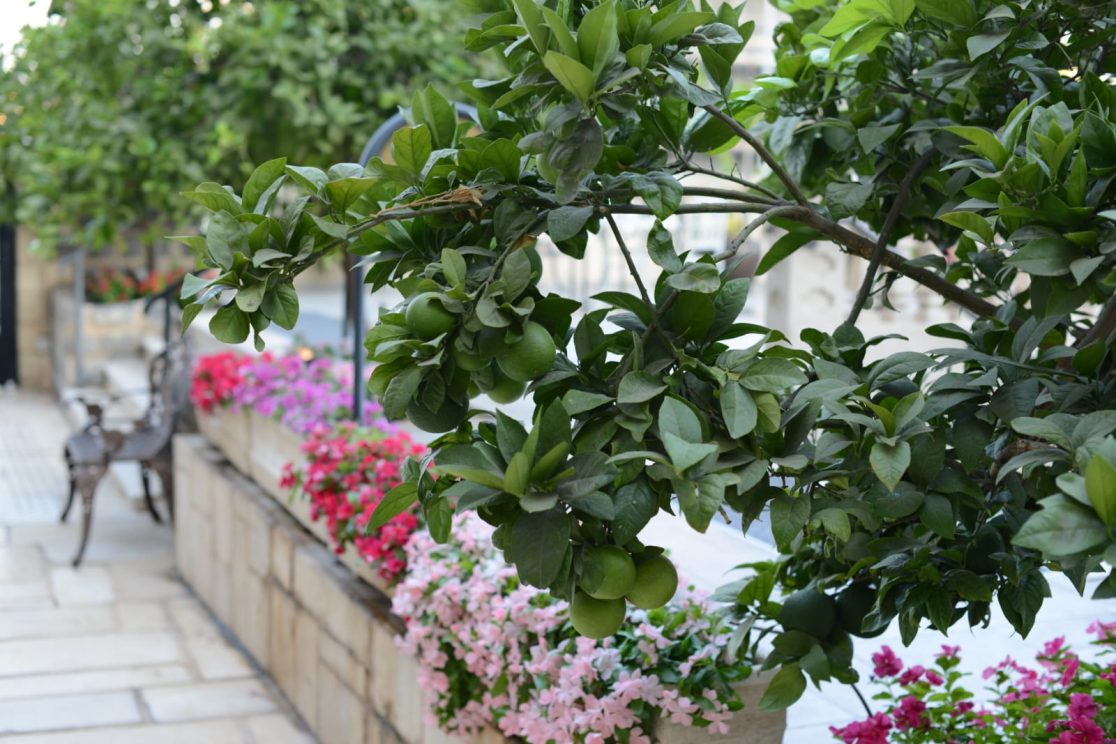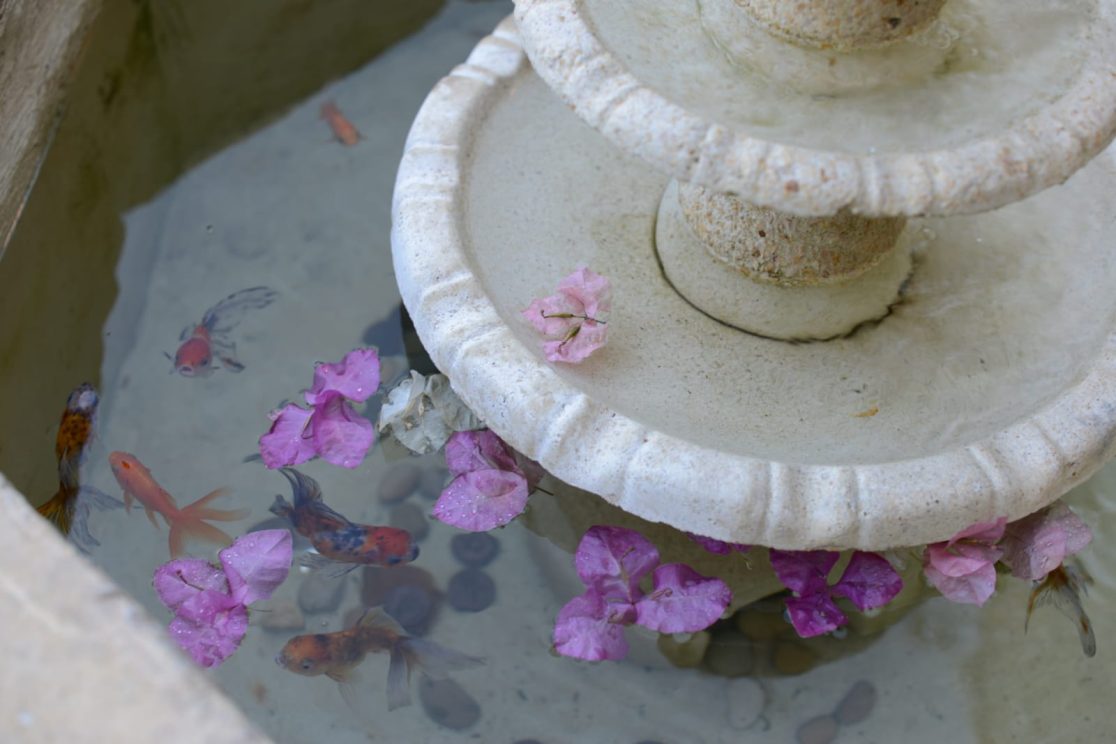Tiberias & the Sea of Galilee
Our visit to Tiberias in northern Israel was an unforgettable summer journey. We explored biblical and scenic gems like Capernaum, Yardenit, Mount Arbel, Susita, Hamat Tiberias, the Church of the Beatitudes, and the Church of the Multiplication—each site rich in history, spirituality, and breathtaking views of the Sea of Galilee.
Written by Zvika Gasner Koheleth 06-May-2025 (Originally May-2021, Edited 28-August-2021, 11-December-2024). Photography by Angela Hechtfisch
A Spiritual Visit to Tiberias and the Yardenit
Our visit to Tiberias, located in northern Israel about an hour’s drive from Tel Aviv, took place on a blazing hot summer weekend — and it was nothing short of amazing.
We began at Yardenit, a beautiful baptism site on the banks of the Jordan River at Kibbutz Kinneret, at the southern tip of the Sea of Galilee.
Each year, over half a million Christian pilgrims come to this site to experience the peace and spiritual energy of the waters where John the Baptist baptized Jesus, according to tradition.
The heartfelt responses of the visitors were moving and uplifting.
Another traditional baptism site lies near Jericho, just a 10-minute drive from the northern shore of the Dead Sea — Qasr al-Yahud.
Many believe this to be the actual location where Jesus was baptized. However, for decades the area was a no-man’s land between Israel and Jordan, heavily mined and inaccessible until the 1980s. As a result, Yardenit, located at the very beginning of the Jordan River as it flows from the Sea of Galilee, became the more popular and developed site.
While Yardenit offers modern facilities and easy access, Qasr al-Yahud retains a more authentic and historical atmosphere — less commercialized, yet deeply significant.
At Yardenit, the site greets visitors with a passage from the Gospel of Mark:
“In those days Jesus came from Nazareth of Galilee and was baptized by John in the Jordan. And when he came up out of water, immediately he saw the heavens opened and the Spirit descending upon him like a dove, and a voice came from heaven; ‘Thou art my beloved Son, with thee I am well pleased.” (Mark 1:9-11)
The site is free to enter and fully accessible, with ramps and handrails. Visitors can rent or purchase baptism robes directly at the site.
There are quiet areas for prayer and reflection, and the staff is highly respectful of visitors’ religious sentiments.
The natural surroundings remain serene and unspoiled, with lush greenery and wildlife like fish and otters gracing the riverbanks.
Tiberias – Church of the Multiplication
The Church of the Multiplication, also known as the Church of the Loaves and Fish, is located in Tabgha, about a 15-minute drive north of Yardenit, on the northwestern shore of the Sea of Galilee (Lake Kinneret). The church commemorates the miracle in which Jesus multiplied five loaves and two fish to feed a crowd of 5,000, as described in Mark 6:30–46. Many believe Jesus appeared here for the fourth time after His resurrection.
According to the Gospel, Jesus and His disciples had sailed to a remote area seeking rest, but a large crowd followed them. As evening approached and food was scarce, Jesus miraculously fed the multitudes with just a few loaves and fish. Soon after, He walked on these very waters — a moment that adds to the spiritual resonance of the site.
While the Bible does not mention a specific geographic location beyond “a remote place on the shores of Galilee,” the tradition identifies Tabgha as the site. Builders first constructed the original church here around 350 AD. Over the centuries, different groups destroyed and rebuilt it multiple times. Today, a modern church stands over the ancient remains.
Inside, near the altar, is a famous mosaic depicting two fish flanking a basket of loaves, symbolizing the miracle. Beneath the altar lies a large stone believed to be where Jesus placed the loaves and fish during His blessing. A glass floor panel reveals the foundations of the early church. In the courtyard, you’ll also find excavated basalt stone fonts and ancient oil presses, offering a glimpse into the area’s historical life.
The Church of the Beatitudes
The Church of the Multiplication, also known as the Church of the Loaves and Fish, is located in Tabgha, about a 15-minute drive north of Yardenit, on the northwestern shore of the Sea of Galilee (Lake Kinneret). The church commemorates the miracle in which Jesus multiplied five loaves and two fish to feed a crowd of 5,000, as described in Mark 6:30–46. It is also believed to be the site where Jesus appeared for the fourth time after His resurrection.
According to the Gospel, Jesus and His disciples had sailed to a remote area seeking rest, but a large crowd followed them. As evening approached and food was scarce, Jesus miraculously fed the multitudes with just a few loaves and fish. Soon after, He walked on these very waters — a moment that adds to the spiritual resonance of the site.
While the Bible does not mention a specific geographic location beyond “a remote place on the shores of Galilee,” the tradition identifies Tabgha as the site. Builders constructed the original church here around 350 AD. Although various groups destroyed and rebuilt it several times, today’s modern church stands directly over the ancient remains.
Inside, near the altar, is a famous mosaic depicting two fish flanking a basket of loaves, symbolizing the miracle. Beneath the altar lies a large stone believed to be where Jesus placed the loaves and fish during His blessing. A glass floor panel reveals the foundations of the early church. In the courtyard, you’ll also find excavated basalt stone fonts and ancient oil presses, offering a glimpse into the area’s historical life.
–
Overlooking the Sea of Galilee from a serene hilltop, the Church of the Beatitudes is a Roman Catholic site located on Mount of Beatitudes, just a short drive from Tabgha and near the ruins of ancient Capernaum, the town of Jesus. Built between 1936 and 1938, the church marks the traditional location where Jesus delivered the “Sermon on the Mount”, one of His most profound teachings, as recorded in the Gospel of Matthew.
The Beatitudes—a series of eight blessings—begin with the Latin word “beati”, meaning “happy” or “blessed.” Each Beatitude contains two parts: a condition and its spiritual reward. While some phrases echo the Hebrew Bible, Jesus’ words elevated them to a message of deep compassion, humility, and spiritual growth—focusing on love rather than power, on mercy rather than judgment.
Matthew 5:3–12 reads:
“(3)Blessed are the poor in spirit,
for theirs is the Kingdom of Heaven.
(4)Blessed are those who mourn,
for they will be comforted.
(5)Blessed are the meek,
for they will inherit the Earth.
(6)Blessed are those who hunger and thirst for righteousness,
for they will be satisfied.
(7)Blessed are the merciful,
for they will be shown mercy.
(8)Blessed are the pure in heart,
for they will see God.
(9)Blessed are the peacemakers,
for they will be called children of God.
(10)Blessed are those who are persecuted because of righteousness,
for theirs is the Kingdom of Heaven.
(11)Blessed are you when people insult you, persecute you and falsely say all kinds of evil against you because of me.
(12)Rejoice and be glad, because great is your reward in heaven, for in the same way they persecuted the prophets who were before you.”
The entire site offers a surreal and peaceful panorama of the Galilee, arguably the most breathtaking view in the region. The church is surrounded by gardens that are meticulously maintained, enhancing the atmosphere of reflection and tranquility. The church itself is modest and elegant, reflecting the spirit of the message it commemorates.
The Church of the Holy Apostles – Capernaum
The Church of the Holy Apostles, belonging to the Greek Orthodox tradition, is located in Capernaum (Hebrew: Kfar Nachum, meaning “Village of the consolation”), on the quiet and secluded northeastern shores of the Sea of Galilee. Easily recognized by its 12 pink domes, the church stands in a tranquil spot, somewhat off the beaten path, yet deeply connected to the Gospel Trail—the route believed to trace Jesus’ steps through the Galilee.
Builders completed the church in 1931, but between then and 1969, people largely abandoned it due to its location in a no-man’s-land between Israel and Syria. In recent years, caretakers have lovingly restored it. Its interior features striking Byzantine-style frescoes and iconography, all created in Greece and later applied to the church walls, adding a rich spiritual and artistic ambiance.
Every year, on January 18th, the church hosts a baptismal ceremony celebrating Epiphany, held just meters from the church itself near the water’s edge.
The Church sits south of Capernaum National Park and north of the ruins of the ancient village of Capernaum, though no footpath connects the two sites.
The Gospels often mention Capernaum, and tradition identifies it as the hometown Jesus chose during his ministry.
According to Christian belief, it is where He lived, and where He began His public ministry, preaching in the synagogue of Capernaum—a key spiritual site for pilgrims from around the world.
“Capernaum” – Jesus town
The ancient village of Capernaum, often called “Jesus’ Town”, lies just south of the Greek Orthodox Church in Capernaum National Park. Settlement in the area began as early as the 2nd century BCE, with continuous life through the Roman era—the period of Jesus’ ministry—and into the Byzantine period, until a powerful earthquake in 749 CE destroyed it.
In 1838, American biblical archaeologist Edward Robinson, known as the “Father of Biblical Geography”, identified the ruins as the biblical Capernaum.
German archaeologists Heinrich Kohl and Carl Watzinger began excavating the site in 1905. Two years later, the Franciscan Order, founded in 1209, continued their work.
Among their most significant discoveries, they unearthed an ancient Jewish synagogue, likely built atop the one where Jesus taught. In nearby Magdala, archaeologists also uncovered another synagogue—possibly another place where Jesus preached.
The name “Kfar Nachum” (Hebrew for “Village of Comfort or consolidation”) reflects its biblical and spiritual identity. According to Christian tradition, this is the place where Jesus lived—most likely in the house of St. Peter—and taught in the synagogue for at least two years. It is also the site of many miracles, including the healing of a man possessed by an unclean spirit.
In Luke 4:31-36:
“31 He went down to Capernaum, a city in Galilee, and was teaching them on the sabbath. 32 They were astounded at his teaching, because he spoke with authority. 33 In the synagogue there was a man who had the spirit of an unclean demon, and he cried out with a loud voice, 34 “Let us alone! What have you to do with us, Jesus of Nazareth? Have you come to destroy us? I know who you are, the Holy One of God.” 35 But Jesus rebuked him, saying, “Be silent, and come out of him!” When the demon had thrown him down before them, he came out of him without having done him any harm. 36 They were all amazed and kept saying to one another, “What kind of utterance is this? For with authority and power he commands the unclean spirits, and out they come!”.
Today, modern pilgrims visit the Church of St. Peter in Capernaum, built in 1990. This unique church stands above the remains of a 5th-century octagonal church, which builders had constructed over what tradition identifies as St. Peter’s home—widely regarded as the first Christian house of worship.
Chorizim National Park
Located just 4 kilometers northwest of Capernaum, on a mountain ridge overlooking the Galilee, lies the ancient village of Chorazin (Hebrew: Korazim), now preserved as a peaceful national park steeped in biblical history. Jesus famously cursed this village as one of three Galilean towns where the Jewish residents rejected His teachings.
As written in Luke 10: 13-15:
13“Woe to you, Chorazin! Woe to you, Bethsaida! For if the deeds of power done in you had been done in Tyre and Sidon, they would have repented long ago, sitting in sackcloth and ashes. 14But at the judgment it will be more tolerable for Tyre and Sidon than for you. 15And you, Capernaum, will you be exalted to heaven? No, you will be brought down to Hades.
Jesus’ prophecy didn’t come true immediately, but Chorazin met its destruction nearly 800 years later.
Today, visitors can explore the impressive ruins of an ancient synagogue, first built in the late 3rd century, rebuilt in the 6th. Like most structures in Chorazin, it was built using local black basalt stone.
One of the synagogue’s unique features is the “Seat of Moses”, likely used to honor distinguished community members. While it features traditional Jewish motifs, some of the decorations also reflect Hellenistic influences. Nearby, you’ll find a ritual purification bath (mikveh) and a building with the distinctive “Chorazin window” — an architectural design that supports a heavy roof while allowing ventilation.
Archaeologists uncovered three ancient olive oil millstones, revealing that olive cultivation and oil production were central to Chorazin’s economy—alongside the wheat farming that made the village well known.
Mount Arbel – Just Outside Tiberias
Continuing our journey through Tiberias’ must-see sites, we made our way to Mount Arbel National Park, just a 10-minute drive south of the city. Mount Arbel is a breathtaking mountain rising 390 meters above the Sea of Galilee, offering a 360-degree panoramic view unlike any other in the region.
To the east, you’ll gaze out over the shimmering Sea of Galilee; to the west, the rolling hills of the Upper Galilee unfold before you. Looking south, the view opens toward Karnaim Hittin—the plateau where the pivotal Battle of Hattin took place in 1187, when Saladin defeated the Crusader Kingdom of Jerusalem, leading to over 700 years of Muslim rule in the region. In the north, during winter months, you can spot the snow-capped peaks of the Golan Heights—a spectacular sight.
The “Carob Tree View”
Mount Arbel lacks much greenery, but one lone carob tree stands out as an iconic landmark in the landscape. Located at the scenic “Carob View” point, this tree stands resilient and visible from afar. Mount Arbel doesn’t offer much greenery, but a single carob tree rises as a striking and iconic feature in the landscape.
To reach it, follow a short 5-minute walk along the black trail from the park entrance. Though modest in size, the carob tree—and the vista it overlooks—offers a moment of quiet beauty and a powerful symbol of nature’s endurance.
Arbel’s Sea of Galilee View & Roee Dror Memorial Bird Observatory – The “Blue Trail”
From the “Black Trail”, we veer east-south onto the Blue Trail, a 750-meter downhill path that leads to the stunning Sea of Galilee viewpoint overlooking the breathtaking northwestern shores of Lake Kinneret. The park named this scenic spot in memory of Sergeant Roee Dror, an Israeli commando who tragically lost his life on the mountain during a training exercise.
From this viewpoint, the trail continues another 3.5 kilometers downhill, ending at the Labor Regiment Parking area. Only experienced hikers should take this segment, as it includes steep, uneven terrain and demands serious caution.
The Fortress Circular Trail – “Black-Red Trail”
Another adventurous option is the extreme circular trail, which combines the Black Trail for descending and the Red Trail for ascending. The park designed this route for advanced hikers and advises children and elderly visitors to avoid it, especially during the hot summer months.
Some sections require climbing with the help of metal handholds embedded in the rock, adding to the challenge and thrill. The hike culminates at the dramatic “Wall”, a steep and narrow cliff section that tests both nerves and stamina. The full loop typically takes about 2 hours to complete.
The “Green Trail” & Accessible “Nitai View”
For visitors seeking an easier and more accessible route, the “Nitai View” is a paved observation point located just 200 meters from the park entrance, offering a stunning view of the Nitai Cliff. This viewpoint is wheelchair-accessible and ideal for anyone with limited mobility.
From there, the Green Trail extends 500 meters along a rocky path that continues to reveal impressive cliffside views, making it a pleasant and scenic walk for most visitors.
General Hiking Guidelines
Regardless of the trail you choose, all hikers are advised to come prepared:
- Hat and sunglasses
- Hiking shoes
- Sunscreen
- Plenty of water
- A charged mobile phone
The park closes daily at 17:00, and entry costs 22 NIS per adult.
Ancient Arbel Synagogue
Within the national park, you’ll also find the remains of the ancient Arbel synagogue, part of a once-thriving Jewish village dating back to the Second Temple period. This site adds a unique historical and spiritual layer to the natural beauty of the Arbel cliffs.
Hamat Tiberias National Park
Let’s start by not confusing this site with “Hamei Tiberias” (Tiberias Hot Springs), the modern spa complex located right across the street. While they both feature hot springs, Hamat Tiberias National Park is an ancient archaeological site situated along the western shores of the Sea of Galilee (Kinneret) in the city of Tiberias.
Hamat Tiberias is home to 17 natural hot springs, known and used even before the city of Tiberias was founded by Herod Antipas—son of Herod the Great—who named the city after the Roman Emperor Tiberius.
Legend has it that King Solomon sent demons to heat the waters underground, made them deaf so they wouldn’t know of his death, and to this day, they supposedly still keep the springs warm. Folklore aside, these springs have been known for their curative properties for centuries.
According to the Jerusalem Talmud, a village named Hamat (meaning “hot springs”) once existed separately from Tiberias. Archaeological remains include Roman-era baths and saunas from the 1st century CE. After decades of drought at the Sea oF Galilee, the hot springs have begun to flow again, though one main spring reaches 60°C, making it unsuitable for bathing.
Luckily, the park also offers three outdoor pools of naturally heated spring water, kept at pleasant 40°C, 35°C, and 30°C—perfect for soaking, especially on cold winter days. The site was renovated in 2013 with the help of private donors, and the facilities, including showers, are well maintained. Entry costs just 14 NIS per adult.
Ancient Synagogue & Zodiac Mosaic
One of the park’s highlights is the remains of an ancient synagogue, dating back to the 3rd century CE, when Tiberias served as the seat of the Sanhedrin, the spiritual center of Judaism after Jerusalem’s destruction. The synagogue was rebuilt four times, due to earthquakes and Ottoman-era destruction.
Its spectacular mosaic floor features:
A southern panel showing the Temple in Jerusalem with Jewish symbols: a menorah, shofar, and arba minim (four species).
A central zodiac panel with the 12 signs surrounding Helios, the sun god—reflecting Roman artistic influence. The seasonal goddesses appear in each corner.
The Hebrew inscriptions are charmingly flawed: the word for Aquarius (“Dli”) is shown upside down and reversed—proof the mosaic artist probably wasn’t fluent in Hebrew!
The synagogue is often called the “Severus Synagogue” after a Greek inscription on the mosaic’s northern side that reads:
“Severus, the student of the most illustrious patriarchs.”
Nearby Sacred Site – Rabbi Meir Ba’al HaNes tomb
Just a one-minute walk uphill from the park is the tomb of Rabbi Meir Ba’al HaNes, known as the miracle maker. It’s a major pilgrimage site.
Susita – The Hidden Roman City Above the Sea of Galilee
Susita, officially opened to the public in 2023, is an extraordinary archaeological site perched on the eastern cliffs of the Sea of Galilee, just a 10-minute drive from the city of Tiberias. This ancient city was originally established during the Hellenistic period in the 2nd century BCE and reached its peak during the Roman and later Byzantine eras.
Built atop a strategic ridge resembling a horse’s saddle, Susita (meaning “horse” in Hebrew, and known as Hippos in Latin) offers stunning panoramic views over the lake. Its unique location sits directly along the African-Syrian tectonic fault line, which caused two devastating earthquakes in its history. The second, in January 749 CE, ultimately led to the city’s abandonment and it was never rebuilt.
Susita coexisted with nearby Tiberias from the 1st century CE. While Tiberias served as a major Jewish cultural center, Susita was part of the Decapolis—a group of ten Greco-Roman cities that embraced a non-Jewish, Hellenistic lifestyle under Roman rule. The remains uncovered here include all the hallmarks of a Roman city: a forum, basilica, public baths, churches, an odeon (small theater), and more.
Excavations began in 2000 and have continued steadily since, revealing layers of urban life, architecture, and art. Today, the site is not only a historical treasure but also a haven for nature lovers, especially between May and July, when colorful bee-eater birds nest along the slopes.
Still relatively undiscovered by mass tourism, Susita is one of the Sea of Galilee region’s best-kept secrets—a magical blend of history, landscape, and serenity.
Sea of Galilee Beaches – Saving the Best for Last
We saved the best for last: the number one attraction at the Sea of Galilee (Kineret) is without a doubt its gorgeous beaches—the perfect way to cool off on a hot summer day.
And make no mistake, it gets hot here—temperatures can soar up to 45°C in the shade. That’s why we wholeheartedly recommend diving into the refreshing waters, soaking up the sun, and firing up the BBQ for the ultimate Galilean chill-out session.
Where to Go
- On the western shore, you’ll find Capernaum Beach, a more natural and untouched gem, ideal for those who love a wild, quiet vibe.
- On the eastern side, the beaches are more developed. Many visitors flock to Gofra Beach, which offers lifeguards, a mini-market, public showers and restrooms, accessible paths, and designated areas for BBQs and camping. It’s perfect for families and groups looking for comfort and convenience.
- Zemach Beach sits on the southeastern shore of the Sea of Galilee and recently completed a full renovation. Many visitors prefer Gofra Beach for its wide range of amenities—lifeguards, a mini-market, public showers and restrooms, accessible paths, and absolutely no BBQs. Yep, you heard right—BBQ is forbidden here. The beach offers lush greenery, clean facilities, and a calm, family-friendly vibe.
The Horns of Hattin reenacted battle of 1187
The Horns of Hattin (Hebrew: Karnei Hittin) is an extinct volcano in the Lower Galilee, near Mount Arbel and right beside Nabi Shu’ayb’s tomb—a sacred Druze site believed to be the resting place of Jethro, Moses’ father-in-law.
During the Crusader period, the site held little importance and stood deserted. But on July 4, 1187, history was made here: after a grueling 25 km march in just 48 hours under the blazing summer sun from Tzippori near Nazareth, the Crusader armies clashed with Saladin’s forces, advancing from the Jordan River crossings by the Sea of Galilee south of Tzemach. The Crusaders were decisively defeated, with the surviving knights fleeing to the southern summit, where they ultimately surrendered.
By tradition, the Crusader cavalry rode into battle behind the True Cross—the very relic Jesus was crucified on, later discovered by Helena in 4th-century Jerusalem. But during the clash with Saladin, it was captured by his forces and vanished forever.
The Battle of Hattin marked the beginning of the downfall of the Crusader kingdom in the Holy Land. Today, every July 4th, the historic clash is reenacted to honor this turning point in history. Tickets cost 40 NIS per adult and must be purchased in advance, with entry through Kibbutz Lavi.
Nabi Shu’ayb – sacred heart of the Druze faith
Nabi Shu’ayb sits just 1 km northwest of the Horns of Hattin—but you’ll need to take a winding road to reach it. According to Druze tradition, Jethro, Moses’ father-in-law, spent his final days in a cave here, where he died peacefully. His followers buried him on the spot and marked the grave with a monument.
Another Druze legend says that the night before the Battle of Hattin, Saladin dreamed of an angel who promised him victory. After his win, Saladin rode west, discovered Jethro’s resting place, and the Druze built the shrine there.
Today, Nabi Shu’ayb is the holiest Druze site in the Galilee and is also respected by Jews. Every year, starting on April 24, thousands of pilgrims gather for the four-day Nabi Shu’ayb festival. At the heart of the complex stands a large building with a central shrine, welcoming worshippers and visitors alike.
Villa Europe 1917 – Tiberias
Last but definitely not least, a few words about the hotel we stayed in during our visit to Tiberias: Villa Europe 1917 — a true hidden gem.
This beautifully restored boutique hotel, located in the historic heart of Tiberias, blends authentic early 20th-century European charm with modern luxury. Just 200 meters from the Sea of Galilee’s waterfront and boardwalk, the hotel offers fabulous rooms, excellent cuisine, and a warm, historic atmosphere that instantly draws you in.
A historic building first opened as a luxury hotel in 1917, the property changed hands in the 1930s when the Ovad family of Tiberias acquired it. After flourishing for decades, the building eventually fell into disuse—until Zohar, a family descendant, took on the mission of restoring it. After five years of careful renovation and preservation, the team restored the hotel to its former glory.
The hotel’s kosher restaurant serves an outstanding breakfast, blending French classics with international flair, including a surprising touch of Japanese sushi. We found the food simply exceptional.
The hotel provides fully equipped, spotless rooms that staff maintain with care—offering a perfect retreat after a full day of exploring Tiberias and the Galilee.
Scots Hotel
We also recommend Tiberias’ top overnight stay — the exceptional Scots Hotel. This remarkable property offers the renowned Saint Urban Wine Cellar & Bar, alongside a luxurious Spa & Lakeview Wellness Center, the elegant Torrance Restaurant, a swimming pool, and a beachfront garden with uninterrupted views of the Sea of Galilee.





